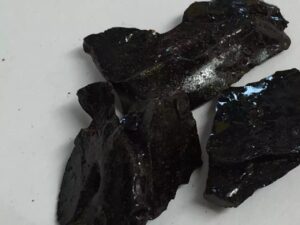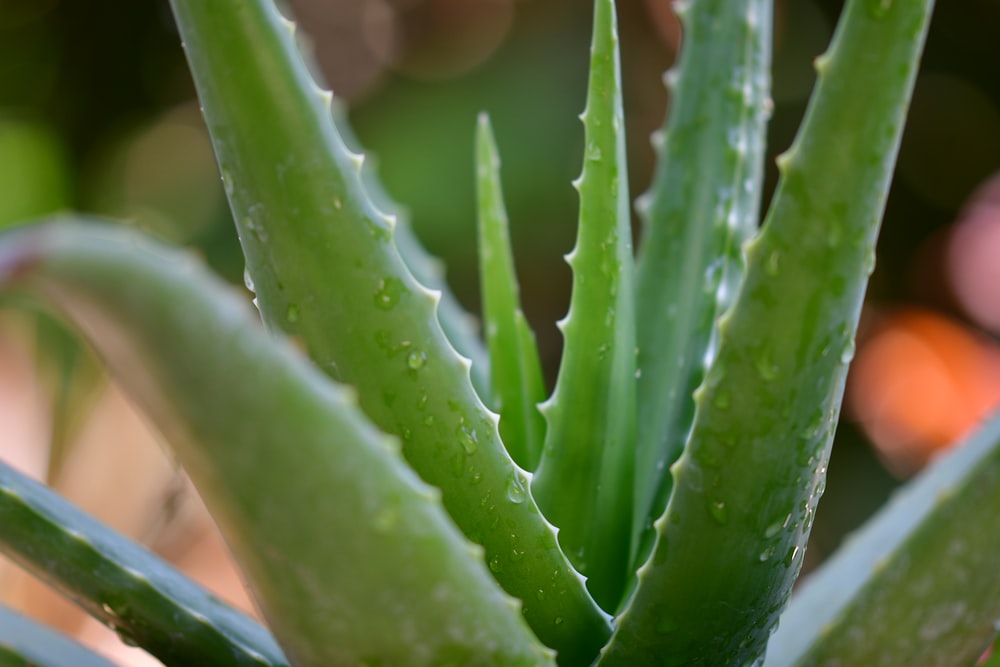Ayurvedic
Kanyasara (Aloe barbadensis) Herb Ayurvedic Overview
Kanyasara (Aloe barbadensis) is a miracle plant in the field of Ayurveda, which comprises dried juice of leaves of Aloe barbadensis. The shrub is planted in a plethora of Indian gardens and found growing all over India.
Kanyasara is assembled by cutting the leaf blade at the lower end to discharge the juice, collected, pulverized, and heated at low temperature up to total evaporation of water, Vati Kalpana is composed. Kanyasara appears dark chocolate brown to black; it is opaque and of compact mass. It is an essential ingredient of many classical Ayurvedic formulations such as Rajahpravartini Vati, Kumarayasav, etc.
Kanyasara is majorly katu rasa and katuvipaka, which has a prevalence of agnimahabhuta and vayudosha. Kanyasara has kaphahara and srotoshodhana properties which help remove the clots and increase the menstrual blood. The deepana and pachana karma in this herb clears the srotodushti and improves the jathragani and dhatvagni hence helping in srotopushti.
Due to it, sushnavirya properties help improve rhythmic contractions in the uterus and the proper functioning of vatadosha, which causes the natural formation of artava. Kanyasara also contains minerals like iron, copper which helps in oxygen transportation and the formation of hemoglobin in red blood cells. It also helps to improve the rasa and raktadhatu which in turn improves the quality of artava, which also contains vitamins like A, B, B2, B6, B12, C, and improves general health of the patient.
Table of Contents
Scientific Classification of Kanyasara (Aloe barbadensis):
- Domain: Eukaryota
- Kingdom: Plantae
- Phylum: Spermatophyta
- Subphylum: Angiospermae
- Class: Monocotyledonae
- Order: Liliales
- Family: Aloaceae
- Genus: Aloe
- Species: A. vera
Kanyasara (Aloe barbadensis) Synonyms:
- Sanskrit: Kumarirasasambhava, Sahasara
- Assamese: Musabhar, Machambar
- Bengali: Ghritakalmi
- English: Indian Aloe
- Gujrati: Eliyo, Eariyo
- Hindi: Musabhar, Elva
- Kannada: Karibola, Lolesarasatva, Lovalsara, Lolesara
- Kashmiri: Musabbar, Siber
- Malayalam: Chenninayakam
- Marathi: Korphad
- Oriya: Musabara
- Punjabi: Kalasohaga, Mussabar, Alua
- Tamil: Kattazhi, Satthukkathazhai
- Telugu: Musambaram
- Urdu: Musabbar, Ailiva, Siber
Kanyasara (Aloe barbadensis) Description:
 Identification: Mix 0.5 g of the herb with 50 ml of water, boil until almost it gets dissolved, and calm. Then add 0.5 g of Kieselguhr and then filter, and to the filtrate apply the following tests:
Identification: Mix 0.5 g of the herb with 50 ml of water, boil until almost it gets dissolved, and calm. Then add 0.5 g of Kieselguhr and then filter, and to the filtrate apply the following tests:
Heat 5 ml of filtrate along with 0.2 g of Borax until it is dissolved, add a few drops of the solution to a test tube almost filled with water, green fluorescence is generated. Mix 2 ml of filtrate along with 2 ml of a freshly prepared solution of Bromine; a pale yellow precipitate is generated.
a) Macroscopic: Dark chocolate brown to black, compact, irregular masses: surface dull, opaque with a bit vitreous appearance, odor, characteristic, the taste is nauseous and bitter.
b) Microscopic: Powder, when mounted in glycerine or lactophenol and observed under the microscope, shows innumerable crystalline, yellowish-brown to chocolate-colored particles of different shapes and sizes.
Identity, Purity, and Strength of Kanyasara (Aloe barbadensis):
- Foreign matter Not more than 2 percent, Appendix 2.2.2.
- Total Ash Not more than 5 percent, Appendix 2.2.3.
- Acid-insoluble ash Not more than 2 percent, Appendix 2.2.4.
- Alcohol-soluble extractive Not less than 80 percent, Appendix 2.2.6.
- Water-soluble extractive Not less than 60 percent, Appendix 2.2.7.
Chemical Constituents of Kanyasara (Aloe barbadensis):
The main chemical composition of Kanyasara are anthraquinones, glycoside, amino acids, minerals, vitamins, lignins, monosaccharides, sali-cyclic acids, saponins.
Ayurvedic Properties and Action of Kanyasara (Aloe barbadensis):
- Rasa: Katu
- Guna: Usna
- Virya: Usna
- Vipaka: Katu
- Karma: Bhedi, Pittanirharana, Rajahpravartaka, Jvaranut.
Ayurvedic Formulation made by Kanyasara (Aloe barbadensis):
Kanyasara is used in these Ayurvedic formulations listed in classical Ayurvedic textbooks such as Rajahpravartini Vati, Cukkumtippalyadi Gutika, Kumarayasav, Karutha Gulika, and Mukta Panchamrita Rasa.
Therapeutic Uses of Kanyasara (Aloe barbadensis):
The main therapeutic uses of Kanyasara are: Jvara, Udararoga, Kastartava, Artavakshaya, Yakrdvikara, Vibandha, Prameha, Gulma and Arsha.
Dose of Kanyasara (Aloe barbadensis):
125 – 500 mg of drug in powder form.
Reference:
Ayurvedic Pharmacopeia of India.
For regular health updates, please follow our Social Pages


